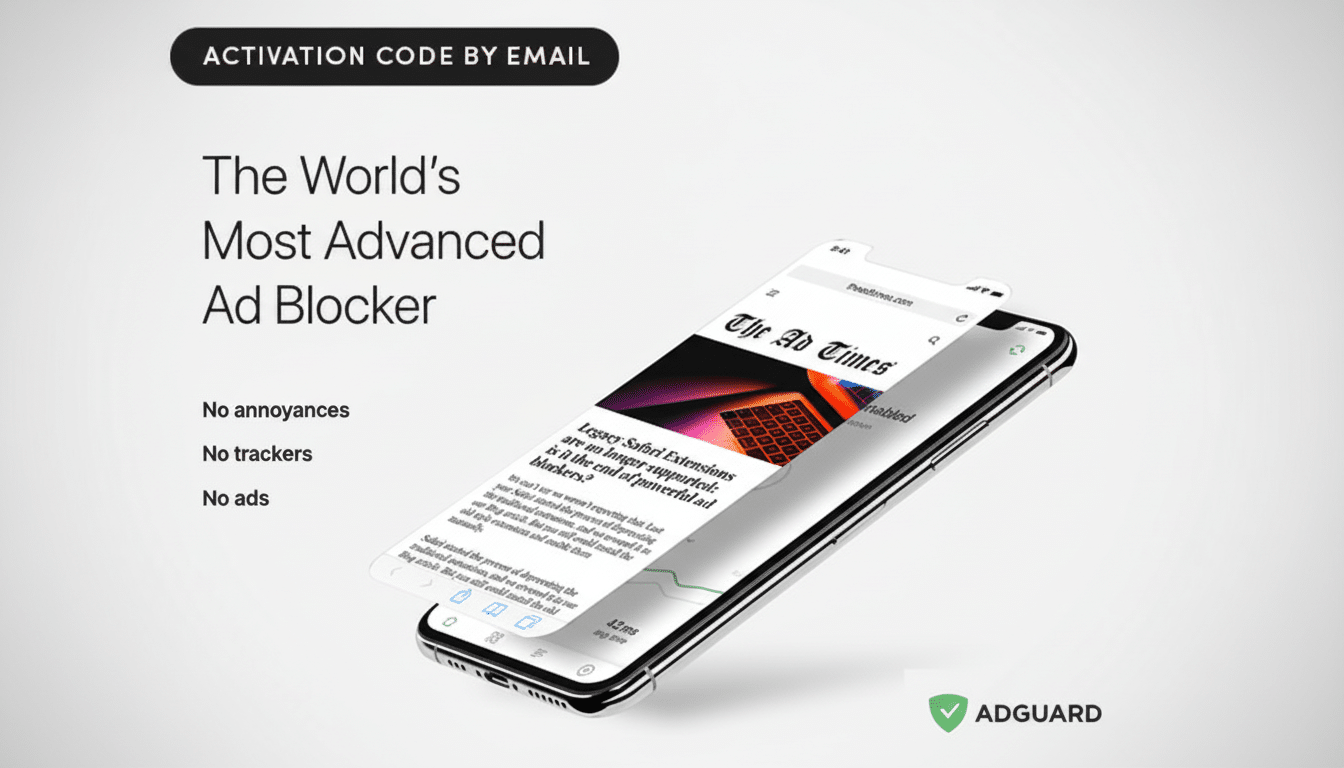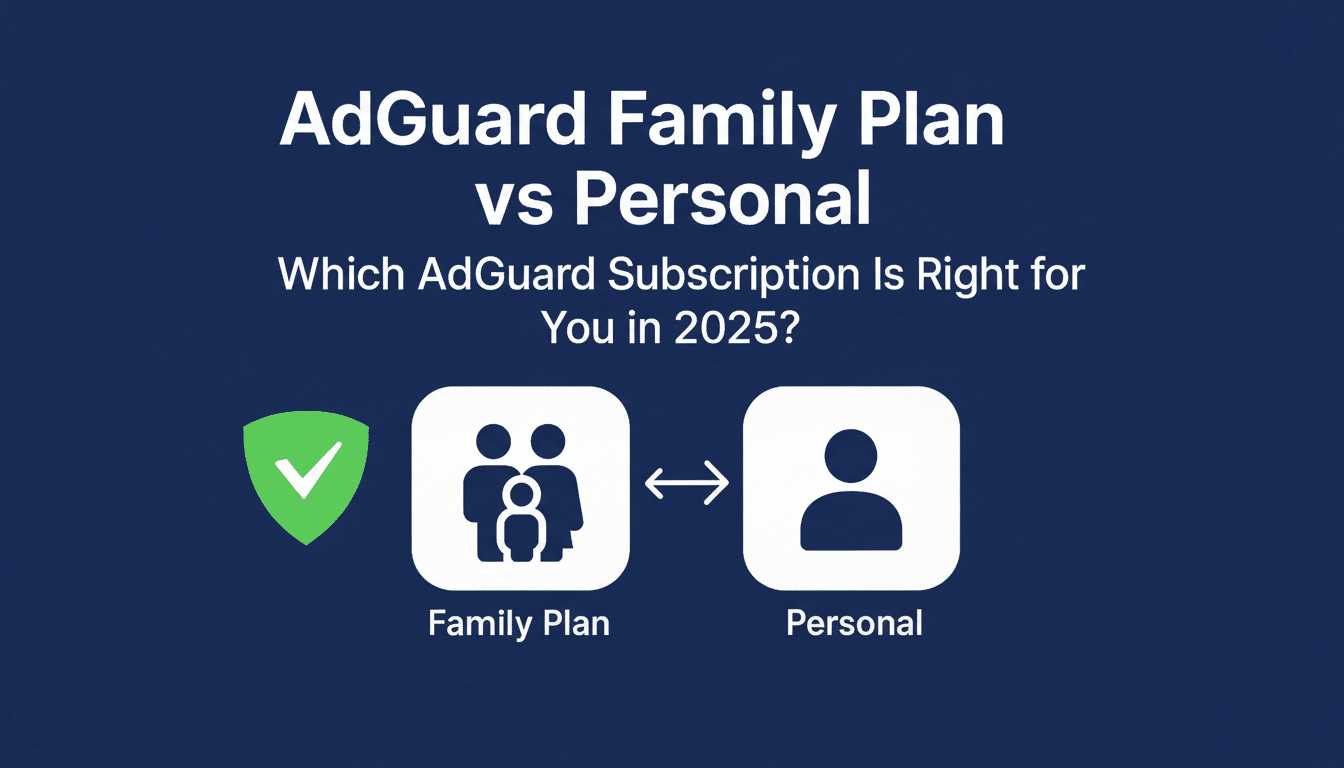A limited-time offer is putting a popular ad blocker within reach of nearly any household budget. For about $19, the AdGuard Family Plan licenses ad and tracker blocking on up to nine devices, bundling privacy tools and parental controls in a single, cross-platform package.
What $19 Buys You
The Family Plan covers nine devices across Windows, macOS, Android, iOS, and major browsers. It targets intrusive banners, autoplay video, pop-unders, and malicious or misleading domains, while giving you granular control with allowlists, custom filter subscriptions, and per-app rules.

The plan also includes parental controls, letting guardians restrict adult content or set safe search defaults without managing multiple products. AdGuard supplements blocking with anti-tracking and anti-phishing defenses, filtering known tracking endpoints and suspicious URLs. On desktop, it can perform HTTPS filtering via a local certificate to catch ad and tracker payloads inside encrypted traffic—a necessary step as more sites default to HTTPS.
How It Works Across Devices
On Android, AdGuard uses a local VPN to filter traffic system-wide, which means it can block many in-app ads and trackers without routing your data through external servers. On iOS, it taps into Safari content blocking and DNS filtering, curbing web ads and trackers while minimizing performance overhead. Desktop apps filter at the OS level, while extensions offer lightweight control in Chrome, Firefox, Edge, and other browsers.
For homes with mixed ecosystems, the nine-device ceiling seems enough for a typical setup. Deloitte’s 2023 Connectivity and Mobile Trends report suggests that the average US household now maintains over 20 connected devices, highlighting that even outside traditional PCs and phones, multi-device protection is important.
Performance and Privacy Gains
Ad and tracker payloads are also bloat. A New York Times analysis of mobile web pages pinned ads and trackers at upwards of half the total data volume, with extreme cases near 79%, especially for certain news sites. Blocking that waste reduces page weight, which can speed page loads and reduce data on metered connections.
Privacy improves as well. Princeton researchers demonstrate that third-party trackers serve on most popular websites and quietly log data across domains. Reducing this surface area lessens one’s profile risk and limits exposure to malvertising, still a favorite vector for scams and drive-bys according to security analysts.
Where It Works and Where It Won’t
No blocker is infallible. Some streaming services and mobile apps run proprietary ad delivery or encryption methods that evade filters, particularly in official apps. Many publishers operate ad-blocker detectors.

You can limit breakage by enabling allowlists for sites you trust or using DNS-based filtering systems when app-level blocking is restricted by platform policy.
There’s also the ethics question: ads fund a lot of journalism and free tools. A balanced approach is to use strict blocking for unknown or risky sites, then selectively allow ads—or at least trackers—on outlets you want to support. AdGuard’s per-site toggles and cosmetic filtering controls make that workflow manageable.
The Value Math for Households
At roughly $19 for nine devices, you’re effectively paying just over $2 per device for multi-year coverage, depending on the vendor’s license terms. That undercuts many monthly subscriptions while consolidating privacy and parental tools you might otherwise buy separately. For families juggling kids’ tablets, school laptops, and personal phones, the convenience alone seems worth noting.
Setup is straightforward:
- Install the app.
- Import recommended filter lists.
- Tune exceptions for banking, shopping, and streaming sites as needed.
- Subscribe to additional filter lists.
- Write custom rules.
- Switch to DNS modes to protect smart TVs and devices that don’t support traditional ad blockers.
How It Compares to Alternatives
Browser-only blockers like uBlock Origin are excellent and free, but they don’t cover native apps or system-wide traffic. Network-wide tools such as Pi-hole offer whole-home filtering but require a separate device and more technical upkeep. The appeal of this AdGuard deal is its blend of breadth: nine devices; depth: system-level filtering; and ease of use at a one-time price point.
If you have had enough of autoplay videos, page takeovers, and background trackers, it is a practical, low-cost way to clean your household’s faster, safer browsing. Do not forget to acquaint yourself with the license’s specifics and renewal conditions, and maintain a small allowlist of the few sites you actually want to sustain.

